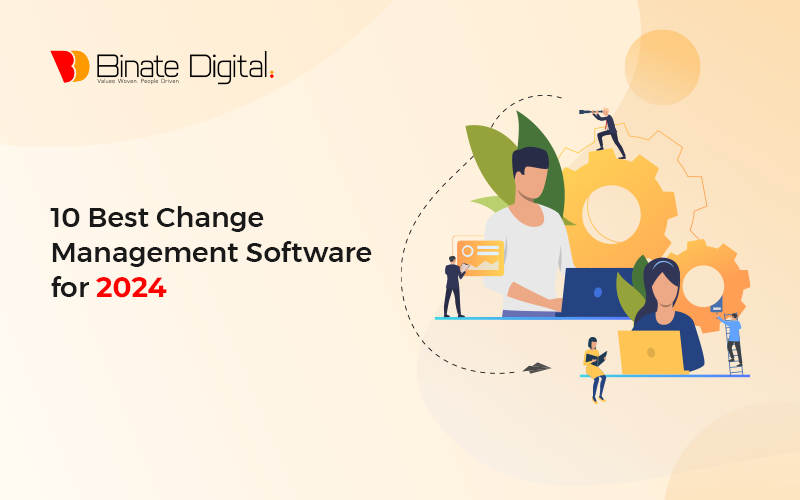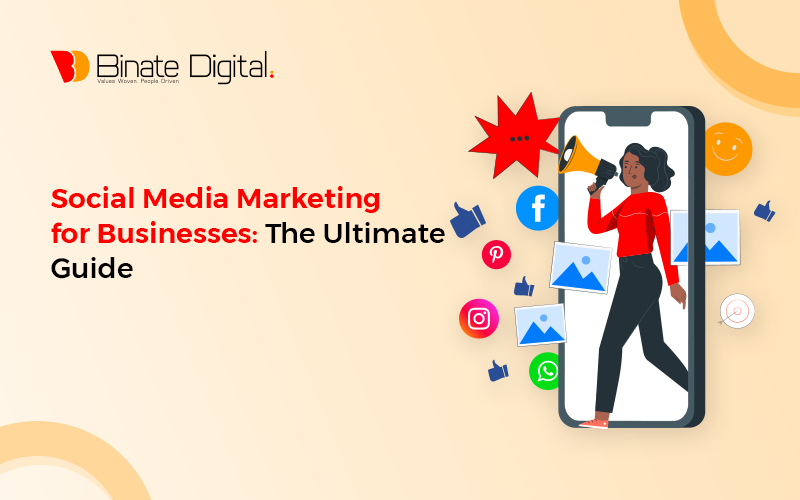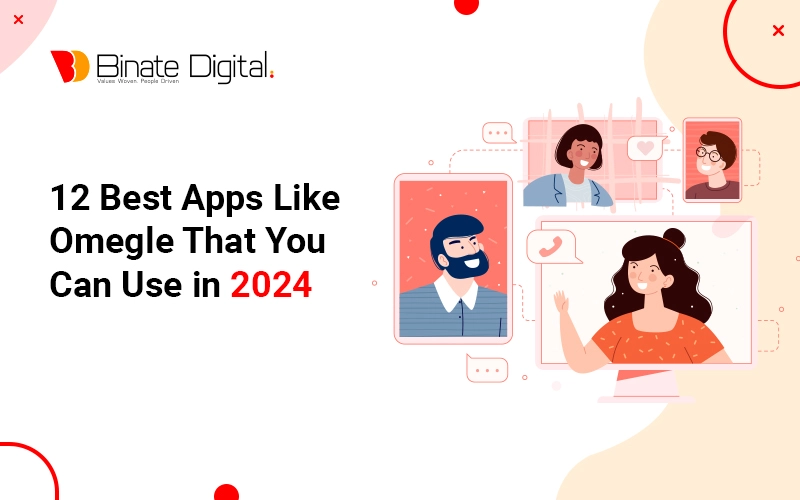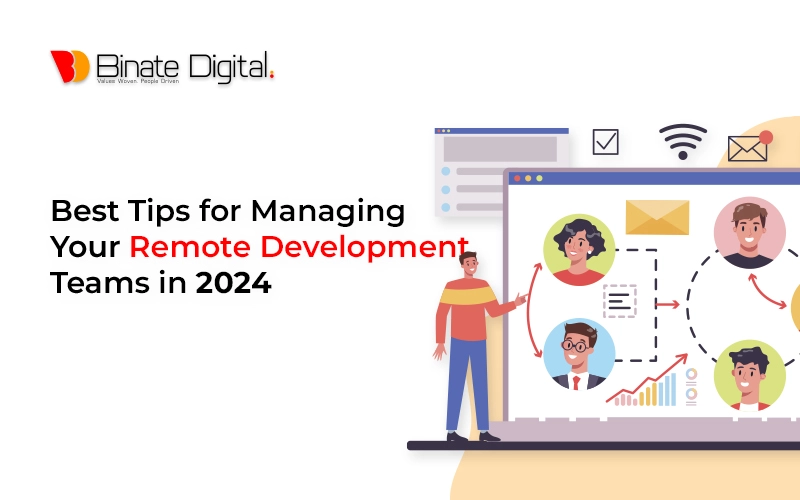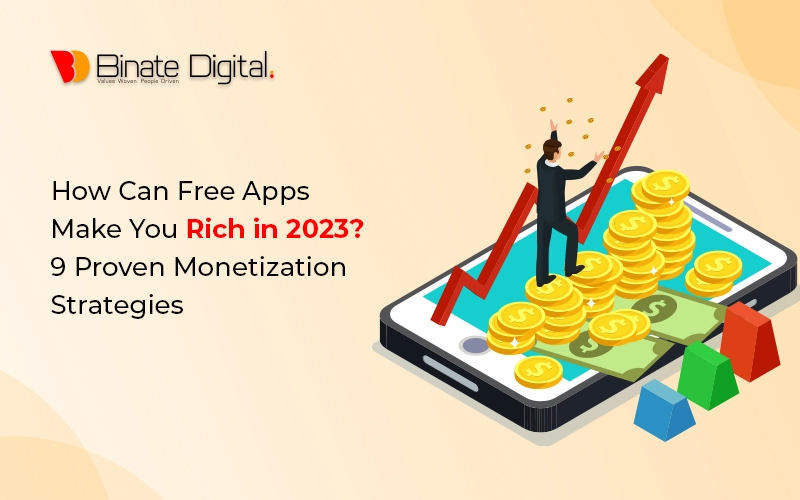10 Best Change Management Software for 2024
It might be difficult to choose the best change management for you when there are so many options available. You need to choose the right software so that you can efficiently plan, execute, and monitor changes to your business’s systems and procedures. In this blog, we will discuss this in detail so it will make your decision easier in this place by sharing my personal experiences utilizing hundreds of different change management software in a range of industries. What Is Change Management Software? Change management software specifies specialized tools and apps created to advance and modernize the procedure of managing organizational change. These software solutions are developed to help businesses plan, implement, and track changes effectively. These software solutions serve as an initiated platform, beneficence a systematic approach to plan, execute, and display changes within an association. They typically embrace features such as project planning to extract the steps and timelines for change programs, dialog tools for collaboration and streamlining, workflow computerization to streamline methods, and document management to incorporate relevant documentation. Additionally, change management software frequently includes risk assessment efficiencies, performance analysis for examining the impact of changes, and training support to provide employees with the necessary expertise. By using this software, organizations can boost their power to adjust to progressing circumstances, enhance employee engagement, and expand the overall success proportion of change initiatives. ManageEngine ServiceDesk Plus ManageEngine ServiceDesk Plus is an inclusive IT service management (ITSM) software that provides a range of components, which include change management. It is created to streamline and automate diverse factors of IT service delivery. The change management function within ServiceDesk Plus concentrates on efficiently handling changes within a company’s IT framework. With ManageEngine ServiceDesk Plus, organizations can strategize, implement, and track changes thoroughly. The software expedites the development of regulated workflows for change requests, guaranteeing that changes are determined, approved, and equipped in a controlled manner. It also offers features for impact analytics, risk estimation, and documentation, allowing organizations to reduce disruptions and maintain the integrity of IT services during transitions. ServiceDesk Plus integrates change management with other ITSM procedures, such as incident management and problem management, building an organized approach to managing IT services. The software is known for its user-friendly link, automation abilities, and reporting software, making it a popular choice for IT teams looking to increase their change management forms within a broader IT service management structure. Jira Service Management Jira Service Management, part of the Atlassian suite, includes change management performance to support organizations in managing and analyzing changes effectively. With its combination with Jira Software, it supports an impeccable experience for development and IT teams. Jira Service Management’s cooperation features and adaptable workflows provide successful change executions for organizations through industries. Prosci Change Management Prosci is a distinguished change management software that supports a complete approach, offering software for planning, development, and aid of organizational changes. It incorporates research-based methodologies and robust analytics to enhance the success of change initiatives. Prosci facilitates effective communication, collaboration, and measurement, making it a preferred choice for organizations aiming for seamless transitions. ChangeGear by SunView ChangeGear stands out as a comprehensive IT service management platform that includes change management functionalities. This software streamlines the change process with features such as automated workflows, impact analysis, and risk assessment. ChangeGear enables teams to collaborate efficiently, ensuring that changes are implemented easily while minimizing disruptions to business operations. ServiceNow ServiceNow’s Change Management unit is part of its wider IT Service Management (ITSM) suite. It contributes to a centralized platform for planning, organizing, and tracking changes. With automation capabilities, ServiceNow ensures consistent and standardized change processes. Its real-time reporting and analytics contribute to informed decision-making, making it a valuable tool for organizations undergoing transformation. IBM Maximo IBM Maximo is an asset management software that includes robust change management features. It helps organizations plan and control changes to assets, reducing downtime and operational risks. With features like impact analysis and comprehensive reporting, IBM Maximo supports organizations in maintaining a clear view of their assets and the changes affecting them. BMC Helix ITSM BMC Helix ITSM integrates change management into its broader IT service management suite. It identifies collaboration, computerization, and compliance to ensure efficient change methods. The software’s inherent interface and resilient features make it a dependable choice for organizations looking to enhance their change management ways and improve complete IT service delivery. Change.com Change.com is a cloud-based change management platform that concentrates on user-friendly features. It allows software for planning, monitoring, and analyzing changes while upgrading collaboration among team representatives. Change.com is particularly appropriate for small to medium-sized businesses desiring effective change management solutions with its importance on simplicity and availability. Ivanti Service Manager Ivanti Service Manager blends IT service management with change management proficiencies. It modernized the change procedures with automation, guaranteeing that changes are measured, approved, and implemented seamlessly. The software’s intuitive interface and integration capabilities contribute to improved efficiency and collaboration among IT teams. Cherwell Service Management Cherwell’s Service Management platform includes resilient change management features to reinforce companies in planning and executing changes effectively. Cherwell authorizes organizations to adjust to progressing circumstances while nurturing a clear view of their change enterprises with workflow automation, adaptable methods, and concurrent reporting. Freshservice Freshservice, an ITSM tool, includes change management functionalities that center on explaining the change methods. Freshservice allows organizations to conduct changes proficiently with features like change templates, automated workflows, and an intuitive connection. It caters to various industries, making it flexible to diverse organizational needs. How I Decided Which Change Management Tools Were Best Here’s where I break down my selection process for the finest change management solutions, in case you were wondering. I began by using change management software, which has a high rating for satisfaction and customer reviews. Then, by applying my project management expertise, I was able to identify the most crucial requirements for change management software and evaluate how each one stood up to the others. I understand how long it can take to find suitable
10 Best Change Management Software for 2024 Read More »

